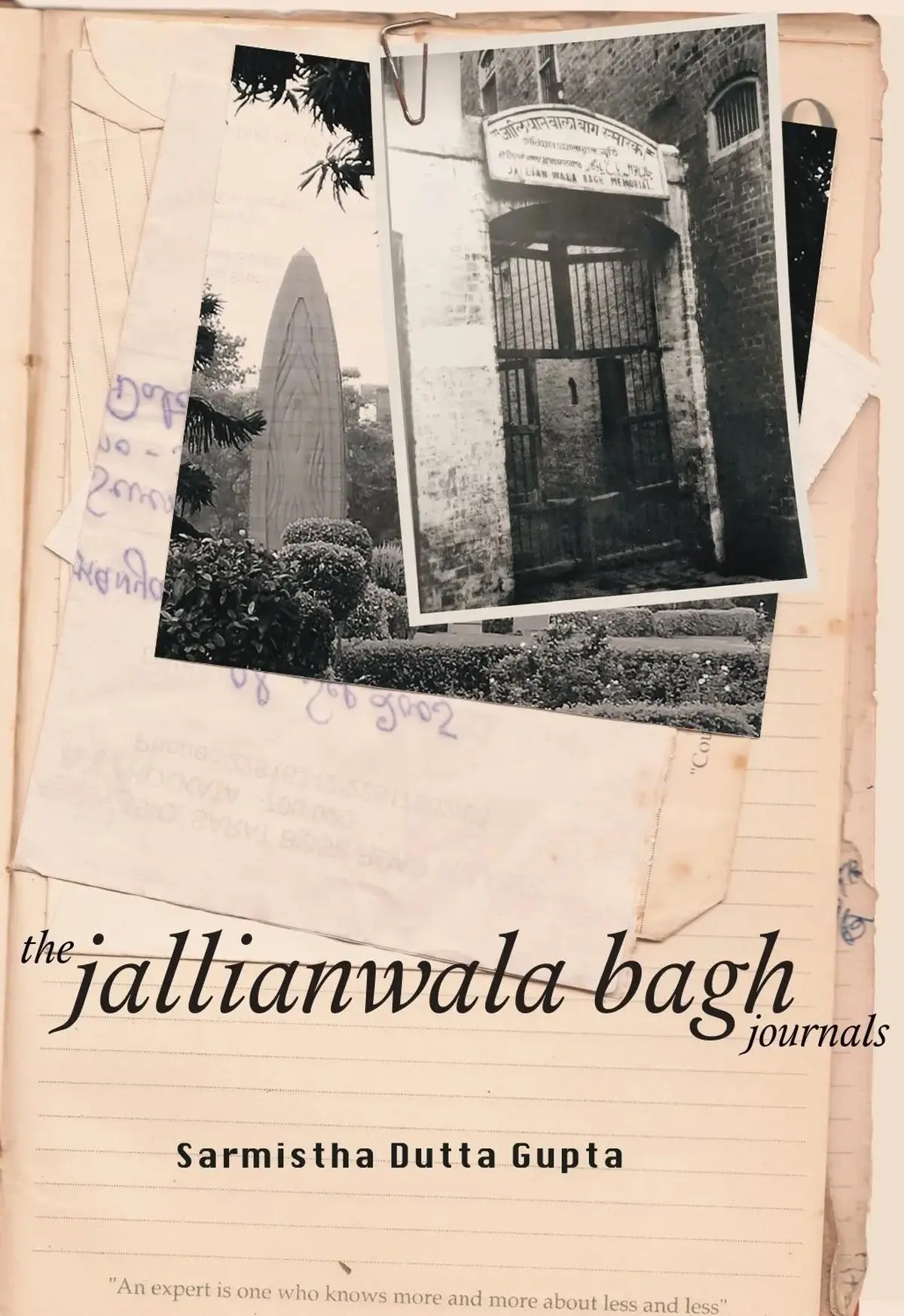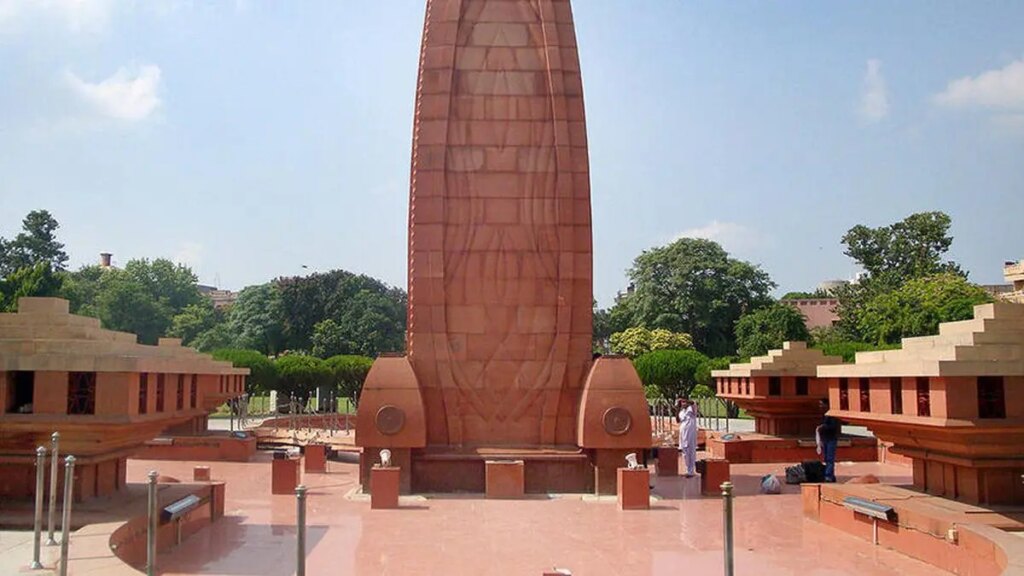The Jallianwala Bagh Journals present criss-crossing reminiscences from multiple other times and our continuing present on the Indian subcontinent—of joys, of suffering, of profound loss, of retrieval, resilience, and courage; also of memory and forgetting and the blurring of the boundaries between memory, forgetting and “remembering” fading contours of that which is believed to have happened. These reminiscences are, in parts, the author’s own; in parts, those of her many interlocutors—friends, acquaintances, and strangers—located across Punjab and Bengal; in parts, those of elderly survivors who bore witness through the lives of their parents’ generation; and in parts, journals of journeys of a generation long gone.
In presenting these reminiscences, the Journals offer a quilted narrative. Through interviews, conversations, photographs from family archives, visual images of statist monumental memorialisation, poetry, and creative expression —in words, embroidery, textiles, and paper—through a twinning of text (this book) and an artistic installation by artist-pedagogue Sanchayan Ghosh. Like the printed Journals, the installation (which the book weaves into its pages) visually presents this work in ways that one may walk through the crawling lanes, bylanes, enclosures, and dead-ends that mar(k) Jallianwala Bagh and everything it speaks through: from the Jallianwala Bagh through Partition to the anti-CAA protests, the COVID catastrophe, the farmers’ protests … and beyond.
The Jallianwala Bagh Journals
By Sarmistha Dutta Gupta
Jadavpur University Press
Pages: 248
Price: Rs.1,250
Through this entire journey that the Journals embark on, three narratives stand out for their contemporary relevance to our understanding of the practice of politics in the days of ascendant Hindutva.
The first is the experiences of the family of Professor V.N. Datta and their archiving across generation of the Partition—convivial fellowship, vernacular criss-crossings, interbraided faith, and religious-spiritual practice, the traditions of the Husseini Brahmins of the Punjab for instance.
The second is the letter C.F. Andrews wrote from Lahore to Rabindranath Tagore on October 1, 1919, on the reaction of the people of Punjab to the poet’s renunciation of knighthood in protest against the British massacre in Jallianwala Bagh:
“I want to tell you, my dearest, dearest friend, in conclusion, how all the poor and the oppressed in this Province are blessing you, and thanking God for the deliverance that was wrought for them by your one supreme act of courage in their hour of danger. Everyone knows how, from that time forward, the reign of terror was broken: the hideous dread, which was hanging over them like a pestilence, was lifted from them. They are blessing your name, night and day, as their deliverer and saviour; and in the midst of all that I am daily seeing and hearing, which fills me with shame and misery and indignation, this is a constant source of joy.”
Also Read | Hazara Singh: Unsung hero of the Indian freedom struggle
To act in the best way possible to demonstrate empathy and solidarity with human suffering and injustice, and the deep meanings this demonstration of empathy bears to those who suffer bears infinite retelling today.
Nehru’s notes
The third is an extract of shorthand notes by Jawaharlal Nehru on his visit to Jallianwala Bagh immediately after the massacre, published in the first volume of his Selected Works:
“We visited the roof of Riaz-ul-Hasan’s house…People very reticent…Gradually we inspired a little confidence—took down several statements. The gali said to have contained abut 250 corpses after the firing. Examined all the neighbouring roofs of houses for bullet marks. Found many of them. Some very high up. Remarkable case of little boy age 5 or so who remained on open roof right through firing and escaped unhurt.Thought they were fireworks. Walls round about him riddled with bullets.”
These notes by Nehru stand out for more than one reason. We live at a time when neither catastrophe nor genocidal violence meet with empathy from the political leadership in power locally and nationally—we have the experience of the “shav vahini Ganga” (River Ganga, the carrier of corpses) that the poet Parul Khakkar describes during COVID, and the genocidal violence in Manipur, as only the latest in a long list. To visit the site of a massacre and record in painful and painstaking detail the magnitude of assault perpetrated, to record the reticence of the adults and the innocence of the children—both witnesses to the truth of Jallianwala Bagh—and to write a journal for posterity, a reminder of how one may practice empathy in the face of profound injustice, is a lesson for our present-futures.

Cover of The Jallianwala Bagh Journals.
| Photo Credit:
By Special Arrangement
In this act of assembling the patches and stitching the quilt, the author resolves a gap she draws our attention to earlier in the book, where she rues the fact that during a visit to Amritsar, although she could find some Hindu and Sikh families of “Jallianwala Bagh martyrs”, the chasm between Hindus and Muslims had grown so wide that she could not find any leads to a Muslim family that had lost someone in the massacre and stayed on in India after Partition. Nor could she find anything written about Muslim martyrs—with Lahore, Kasur, Gujranwala, and Lyallpur that suffered the maximum repression after the massacre now in Pakistan on the other side of a border that could not be crossed. Jallianwala Bagh and Partition were intertwined in people’s memory, so that the collective experience across community and faith in Jallianwala Bagh was lost in the stories told of one part.
Also Read | Jallianwala Bagh revisited
Nehru’s account, importantly, sets this record straight when it speaks of Jhanda Singh, Murad Baksh, Mana Singh, Mrs Begi the widow of Fateh din, Mohamad Bakshi, Nanak Pehelwan, Siddhu, Md. Bakshi Havildar, Mir Wai Ullah, Mir Abdulla, Ahmad Hussain, Riaz-u-Hasan, Chaudhuri Hakim Singh, Hussain Shah—all living around the Bagh in rented houses behind, adjoining, opposite each other, all of which bore the marks of many bullets on walls and roofs and terraces.
The deceptively easy meandering back and forth across States, borders, disciplinary locations, orality, textuality, visuality, and genre in the Journals in fact encapsulates the creation of a complex, deeply engaged historiography of the present. It signposts what in fact goes into the making of a “tradition” of belonging, of long-held possessions (of memory, of truths, of compassion, of resistance against state and mobs and neglect and negligence) that continue to provide succour to us all in the face of unimaginable precarity.
Kalpana Kannabiran is an author and sociologist based in Hyderabad.
Source:https://frontline.thehindu.com/books/jallianwala-bagh-journals-review-memory-partition-histories-punjab-bengal-artistic-political-resistance/article69442349.ece

